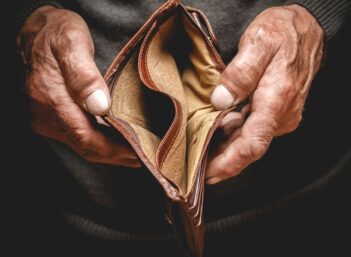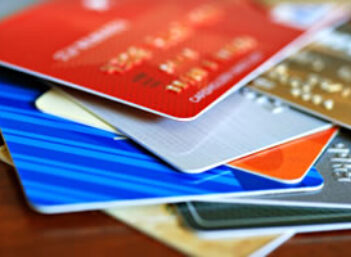What a difference a few years can make. Before the iPhone's ubiquitous 2007 launch, the hottest trend in banking was online bill pay. Few people (and fewer banks) had even heard of banking by phone.
But as smartphones become a greater part of our daily life -- and as our daily life demands even greater efficiency -- mobile banking is prepping for its moment in the spotlight.
Give the People What They Want
While some financial institutions have yet to roll out a mobile banking platform, the bigger banks are pulling out all the stops. Citibank's and Bank of America's mobile banking platforms feature recent transaction reviews, account balances and alerts, bill payments, intra-account transfers and branch and ATM locaters.
Other banks such as US Bank, Chase and USAA Bank are going one step further, offering account rewards confirmation, person-to-person payments (P2P) and, more importantly, remote deposit capture (RDC) capability.
Simply put, RDC is a service allowing users to scan checks and transmit the scanned images to a bank for posting and clearing. In the case of mobile banking, a customer takes pictures of both sides of a check and forwards the photos to the bank, which then deposits the funds in the same way as if the deposit was made through a teller. RDC capability means customers have faster access to their money, while automating yet another deposit feature.
What's the Cost?
Considering the latest debate over rising debit card fees, consumers can be forgiven for thinking banks are rubbing their collective hands over potential mobile usage fees. Not true -- at least for now, that is. Currently, banks are not charging any access fees to their mobile banking platforms, although customers would do well to keep in mind any messaging and web browsing data charges from their mobile carrier.
[InvestingAnswers Feature: Credit or Debit? Your Choice Could Cost You 3%]
How Does It Work?
Mobile banking typically operates across all major mobile providers in the U.S. through one of three ways: SMS messaging; mobile web; or applications developed for iPhones, Androids or Blackberry.
Mobile text and alert is the simplest, allowing the user to transfer funds or access account information via text message. Texting terminology varies from bank to bank, but the overall function is generally the same. For example, texting 'Bal' will obtain the account balance while 'Tra' will allow inter-account transfers. Users need to first register and verify their phone numbers with their bank, but once that's completed, they can also set up alerts to let them know about negative balances or deposit confirmations.
Mobile web is the second mobile banking option. Similar to online account access from a home-based computer, this option allows for checking balances, bill payment and account transfers simply by logging into the user's account via a mobile web browser.
Mobile banking applications for Android, iPhone and Blackberry, connect the user directly to the bank server for complete banking functionality without having to navigate a mobile web browser. These applications can be downloaded either through the bank's website or through the iTunes store.
5 Most Popular Mobile Banking Apps in the U.S.
Bank of America: The mobile banking app from Bank of America offers account balance updates while on the go, plus you can pay bills, transfer funds or find the nearest ATM or branch using GPS. Available for iPhone, Blackberry and Android.
Chase Mobile: Chase Bank's mobile app lets you pay bills and credit cards via the mobile interface, plus you can see account balances, locate a Chase branch or ATM, transfer money and make a deposit using RDC (if below the maximum deposit limit). Customers must first be enrolled in Chase Online in order to access their account information via this mobile app. Available for iPhone and Android.
Wells Fargo Mobile: The Wells Fargo Mobile app lets you check account balances, view recent activity, pay bills and locate ATMs and branch locations. You can also make secure transfers between accounts or to other Wells Fargo customers. Available for iPhone and Android.
USAA Mobile: With the USAA Mobile app, customers can access many of the financial services that this diverse company offers. You can pay bills, transfer funds between accounts, trade stocks and deposit checks. Members can also get assistance on insurance claims and request insurance cards -- all through one easy interface. Available for iPhone and Android.
TD Bank: The TD Bank app lets you check bank balances, transfer funds, pay bills, find TD Bank stores and ATMs, or use one-touch calling for 24-hour customer service. It's not the most advanced app, but what features it does have, it performs well. Available for iPhone, Blackberry and Android.
Yes, But Is It Safe?
These days, smartphones are our wallets except that they carry a lot more personal information than perhaps a traditional wallet ever did. Lose the phone and identity theft takes on a whole new meaning.
Our smartphones, and the large number of easily downloadable apps, work overtime as our social networks, video game providers, radio stations and, from time to time, our mobile phone booths. Yet IT World reported that 89% of mobile phone owners don't realize that many smartphone apps can transmit personal information, while 91% were unaware that these same apps can be infected with malware specifically designed to steal banking details. 29% of smartphone users even admitted to storing credit and debit card details on their phones, thus leaving themselves open to easy identity theft pickings should these files be accessed by thieves.
Since mobile payments in North America alone are estimated to reach $288.4 billion by 2014, these security issues are all the more reason to use commonsense when accessing mobile banking platforms. Here are a few best practices to help protect yourself against potential identity theft through your mobile phone:
- Avoid using obvious passwords to access bank accounts.
- Realize that not all apps are safe and malware-free.
- Choose apps from your bank's website or the iTunes store as the best security bet.
- Check your bank statements for any unusual activity.
- Remember to log out completely from any app or website after you're done.
- Have a Plan B to alert financial institutions in case the phone is stolen.
As a final preventive measure, smartphone owners can also sign up for phone locating and wiping services such as MobileMe for iPhones or Total Equipment Protection for Android and Blackberry. This service allows users to remotely delete personal or sensitive financial information if their phone goes missing or is stolen.
[Photo compliments of mcritz].



